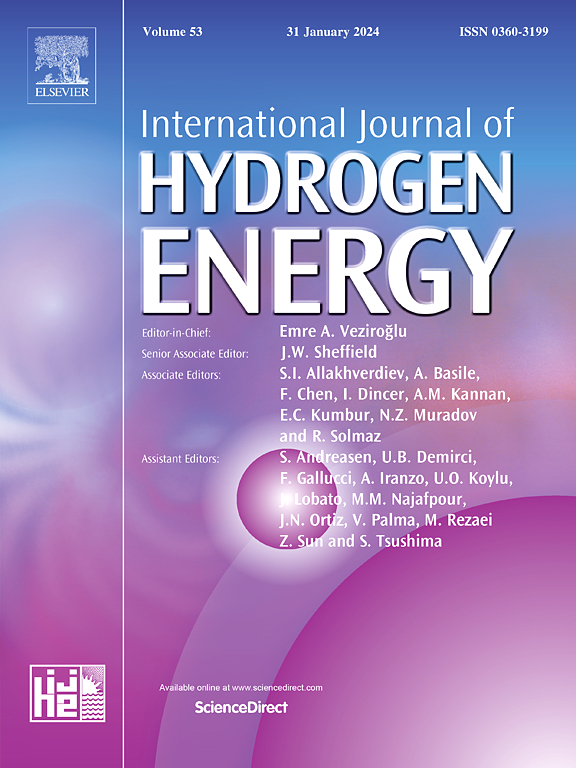Liquid-phase microwave synthesis of platinum-based high-entropy alloy catalysts on carbon supports for electrochemical hydrogen adsorption/desorption and oxygen evolution/reduction reactions
IF 8.1
2区 工程技术
Q1 CHEMISTRY, PHYSICAL
引用次数: 0
Abstract
This study utilizes a pulse microwave-assisted technique to develop Pt and Pt-based high-entropy alloy (HEA) catalysts. The resulting catalysts exhibited remarkable catalytic activities and exceptional durability in hydrogen adsorption/desorption, oxygen reduction reaction (ORR), and oxygen evolution reaction (OER). During the synthesized process, the growth temperature emerges as a critical factor influencing the average particle size, crystallinity, and deposition rate of nanoparticles on the oxidized carbon support. The results indicate that Pt nanoparticles synthesized at a temperature of 100 °C display an elevated number of active sites for hydrogen adsorption and desorption. The Arrhenius plot reveals an apparent activation energy of 10.2 kJ mol−1 (2.4 kcal mol−1), which is substantially lower than the previously reported values for Pt deposits synthesized using the chemical reduction approach. Furthermore, the pulse microwave heating method was employed to synthesize HEA catalysts on carbon supports. These HEA catalysts were identified as Pt42·9Al6·1Ni5·6Cu22·3Sn23.1 alloys. On the surface of the HEA, the presence of multiple metal dopants within the Pt-rich crystals enhances the number of oxygenated sites, improving catalytic stability. This enhancement is attributed to the lower electronegativity of Al, Ni, Cu, and Sn compared to Pt. The HEA catalyst not only demonstrates superior catalytic activity but also exhibits greater durability in both ORR and OER, as compared to pure Pt catalysts. Based on the analysis of linear sweep voltammetry and Tafel plots, the design of the HEA@C catalyst enables enhanced catalytic activity and a faster chemical redox kinetics in the ORR. Pulse microwave synthesis shows promise as a means for synthesizing HEA catalysts with sustained catalytic activity and long-term durability for fuel cell applications, without further treatments.
求助全文
约1分钟内获得全文
求助全文
来源期刊

International Journal of Hydrogen Energy
工程技术-环境科学
CiteScore
13.50
自引率
25.00%
发文量
3502
审稿时长
60 days
期刊介绍:
The objective of the International Journal of Hydrogen Energy is to facilitate the exchange of new ideas, technological advancements, and research findings in the field of Hydrogen Energy among scientists and engineers worldwide. This journal showcases original research, both analytical and experimental, covering various aspects of Hydrogen Energy. These include production, storage, transmission, utilization, enabling technologies, environmental impact, economic considerations, and global perspectives on hydrogen and its carriers such as NH3, CH4, alcohols, etc.
The utilization aspect encompasses various methods such as thermochemical (combustion), photochemical, electrochemical (fuel cells), and nuclear conversion of hydrogen, hydrogen isotopes, and hydrogen carriers into thermal, mechanical, and electrical energies. The applications of these energies can be found in transportation (including aerospace), industrial, commercial, and residential sectors.
 求助内容:
求助内容: 应助结果提醒方式:
应助结果提醒方式:


